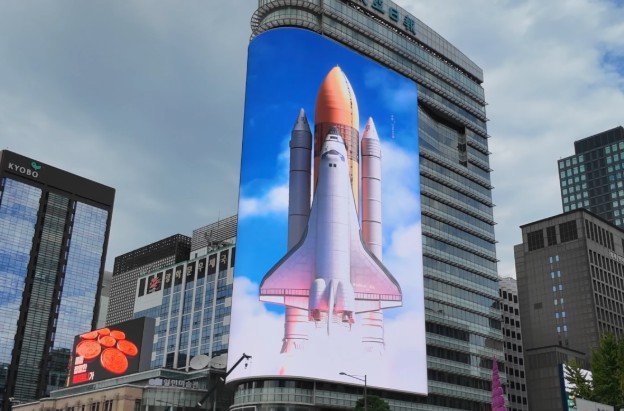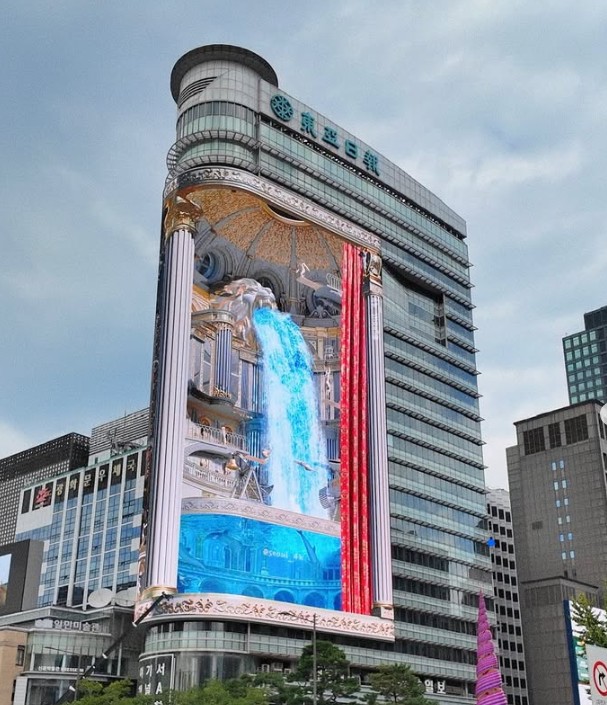In the heart of Seoul’s Gwanghwamun district, LG has set a new benchmark for digital out-of-home (DOOH) innovation with the debut of its colossal LUUX LED display — now officially South Korea’s largest. Spanning an impressive 3,000 square meters, this architectural marvel wraps around the Dong-A Media Centre, forming a J-shaped cylindrical screen that redefines how outdoor media integrates with urban landscapes.

Measuring 50 meters high and 60 meters wide, the LUUX display is roughly the size of seven basketball courts and surpasses every other DOOH installation in South Korea to date. It is 1.85 times larger than the 8K Samsung curved LED display at Seoul’s COEX K-POP Square, which gained worldwide attention in 2020 for d’strict’s “wave” illusion — a viral example of immersive anamorphic LED art.
The LUUX installation is also 1.69 times larger than the recently unveiled dual L-shaped Samsung LED displays at KT Square, just a short distance away in the same district. In global terms, it even outscales most individual LED screens in New York’s Times Square, though it still trails mega-installations like Resorts World Las Vegas and The Reef Los Angeles.
What sets LUUX apart is its unique J-shaped cylindrical curvature — the first of its kind in South Korea. This complex design allows the screen to be visible simultaneously from three major directions — north, west, and south — capturing the attention of pedestrians and vehicles converging at the bustling Sejong-daero intersection.
The curvature not only enhances the viewing experience but also transforms the building façade into an immersive media canvas, merging architecture, digital art, and brand storytelling.
To celebrate its debut, LG premiered a series of high-impact media art performances on the LUUX screen. Among the featured works was “I Will Give You the Universe”, a visually stunning journey of a spacecraft soaring through galaxies. Other creative installations included a balloon-like giant and a whimsical music box sequence — all designed to demonstrate the dynamic visual capabilities of the massive LED surface.

The unveiling of LUUX also highlights an intensifying DOOH competition between Gwanghwamun and Myeongdong, two central districts now vying to become Seoul’s digital media landmarks. In late 2023, the South Korean government authorized the installation of LED displays without restrictions on shape or size in these two areas — a move that has sparked a wave of large-format LED deployments reminiscent of COEX’s policy liberalization in 2016.
In Myeongdong, Samsung recently installed a 1,285-square-metre LED display on the façade of the Shinsegae Department Store, marking another step forward in Seoul’s transformation into an open-air gallery of light, art, and commerce.
With projects like LUUX leading the way, Seoul joins global cities such as Tokyo, Shanghai, and Las Vegas in embracing architectural-scale LED storytelling. As cities evolve into more visually connected environments, large-format DOOH displays are becoming not just advertising tools, but cultural landmarks that reflect a city’s creative and technological ambitions.